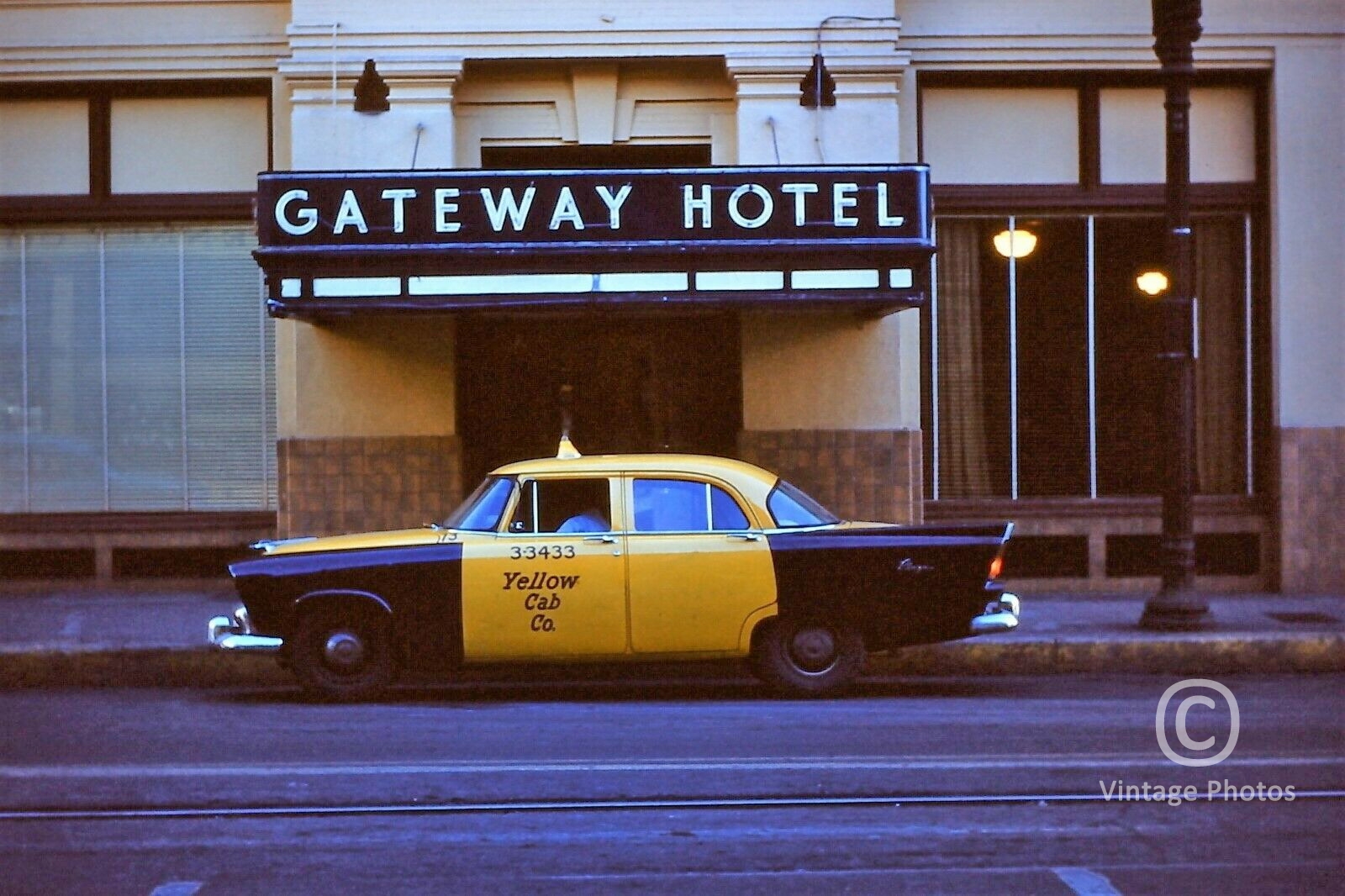
1958 Yellow Cab Co Outside The Gateway Hotel
The Gateway Hotel 104 S Stanton St, El Paso, Texas 79901, USA
The Gateway Hotel opened in 1928 after being converted from an office building by Trost & Trost, the famed El Paso architectural firm headed by the late, prolific and iconic Henry Trost, according to the building's history written for the El Paso Public Library and posted on the Henry Trost Historical Organization's website.
The exterior of the hotel was in a scene shot for 2004's "Glory Road" movie, about Texas Western College's 1966 national basketball championship team. And the hotel also was in 1972's "The Getaway," starring the late actor Steve McQueen.
Howard "Danny" Yun spent three years cleaning and renovating Downtown El Paso's historic Gateway Hotel, which was closed after being used in an immigrant smuggling ring.
"This building was terrible” when he became owner of early 20th Century, five-story building in 2015, said the 72-year-old South Korea native who immigrated to the United States more than 40 years ago. He's lives in El Paso
It was originally the Guaranty Trust Building. A 1903 Structure
in 1928 it was purchased by Charles Bassett and remodeled by Trost & Trost. It was the Flagship property in Bassett's new Hotel chain, which included the Hidalgo in Lordsburg, NM, La Caverna in Carlsbad, NM, the Hotel Paisano in Marfa, and the Hotel El Capitan in Van Horn, TX.
The structure, located at the corner of Stanton and San Antonio in downtown El Paso
Guaranty Trust Building, 1903. A centerpiece of pride for El Pasoans in the pre-Trost era was the Trust Building, erected by George J. Hilzinger, the founder of the Guaranty Trust Company. Ground was broken for the 5-story superstructure on the 5th of July, 1902, and it was formally dedicated to business on August 3, 1903. The contractor for this building was Rattenburg & Davis, an El Paso company active in the area from the 1890s until approximately 1928. The architectural firm was Isaac S. Taylor & Co., a renowned St. Louis, MO firm who had designed buildings for the Guaranty Trust Bank in that great city.
The Trust Building carried the Pride of the growing city of El Paso for some time as one of the first "real" Business Blocks erected with the importance and appearance of east coast cities' buildings. It's major competition at the time was the Ernest Krause designed Alfred Coles Building and the Albert Mathias block on Overland. Sure, there were other large business structures present at the time - the Sheldon and the Bronson, to name two - but this new kid on the block (so to speak) made ELP feel like one of the biggies, with its "Chicago" look and swagger.
The building had a frontage of 79 feet on San Antonio, and 100 feet on Stanton. It stood near or at the geographical center of El Paso, and was convenient to Railroads, the Federal Building, only 1/2 block from the City Hall and close to critical street car lines. It had a Roof Garden, electric elevators, and - to quote a period newspaper - "presented an imposing appearance from every point of view". It reigned in El Paso until 1907 when Edward Kneezell built the El Paso and Southwestern Railroad building, today's BBVA Bank. Both the Kneezell Building and the Guaranty Trust stand today.
The Trust was a steel-framed building, faced with cream-colored St. Louis pressed brick and Indiana Limestone. The building was erected without wood, other than in a decorative frame, so as to be nearly fireproof.
Isaac S. Taylor, the building's architect, was known as the "Fallstaff of Staff City", and was to St. Louis what Trost & Trost was to El Paso. He was lead architect for the Louisiana Purchase Exposition is Missouri, and earned his title of Falstaff from a line in the Shakespeare play Henry IV: "Fallstaff sweats to death - And lards the lean earth as he walks along". He was overweight and known to sweat profusely. Born in Nashville in 1851, Taylor built a number of downtown St. Louis buildings, including the Southern Hotel and the Hotel Planters. He had graduated from St. Louis University with a degree in architecture at the young age of 17.
The Trust Building in El Paso stood until 1928 as home to a number of important local businesses, including the Electric Company and architects Trost & Trost, until in 1928 it was purchased by Charles Bassett to become the flagship hotel in his Gateway Hotel chain. Like many other buildings in our history, it received an exterior remodel to give it a more "modern" appearance as it entered into its new profession, leaving its original classic architecture to memory and to the few photographs that existed. The work of the Falstaff of Staff City in ELP is gone, never to be recovered.
***************
Text and research provided, citing period newspaper clippings accessed at newspapers.com, and City Directories accessed through the UNT Digital Archives at https://texashistory.unt.edu/
